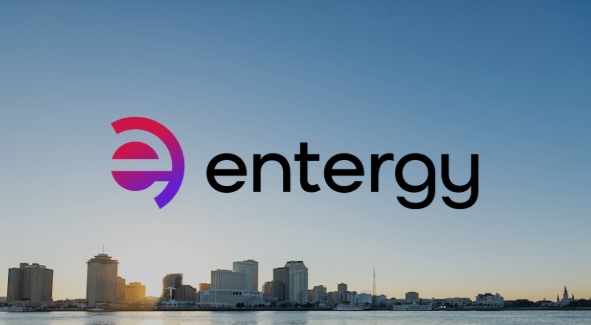Entergy Stock Analysis Can This Utility Giant Weather the Energy Transition?

This Entergy stock analysis assesses the investment potential of Entergy Corporation (ETR), a major US utility company providing electricity to millions of customers across Arkansas, Louisiana, Mississippi, and Texas. As the energy sector undergoes a significant transformation driven by decarbonization and increasing competition, Entergy faces both challenges and opportunities. This analysis will delve into Entergy financial performance, its strategic initiatives, and competitive positioning to provide investors with a comprehensive view of its prospects.
Company Overview
- History: Founded in 1913, Entergy has a long history of providing electricity to customers in the southern US. It owns a diverse mix of generation assets, including nuclear, natural gas, coal, and renewable energy resources.
- Shareholders: Publicly traded on the New York Stock Exchange (NYSE).
- Mission: To power life for its customers and communities by providing safe, reliable, and affordable electricity while leading the transition to a cleaner energy future.
- Vision: To be recognized as a leading utility company in the US, known for its commitment to sustainability, customer service, and operational excellence.
Entergy Financial Performance: Stability Amidst Transformation
This Entergy stock analysis evaluates Entergy financial health. While the utility industry is generally considered stable due to its regulated nature, Entergy faces challenges related to infrastructure investments, regulatory changes, and the transition to cleaner energy sources. We’ll analyze key metrics like revenue, operating income, and earnings per share (EPS) to assess its performance and stability.
Revenue and Operating Income:
This Entergy stock analysis delves into Entergy financial performance, focusing on revenue and operating income trends.
| Year | Revenue ($B) | Operating Income ($B) \$ | EPS () | Dividend Yield (%) | Payout Ratio (%) | Market Cap ($B) | ROE (%) |
| 2014 | 11.42 | 2.28 | 2.45 | 4.2 | 70 | 14.50 | 11.2 |
| 2015 | 11.68 | 2.35 | 2.61 | 4.3 | 72 | 14.85 | 11.8 |
| 2016 | 11.85 | 2.42 | 2.78 | 4.1 | 68 | 15.20 | 12.4 |
| 2017 | 12.20 | 2.58 | 2.95 | 3.9 | 65 | 16.80 | 13.0 |
| 2018 | 12.55 | 2.65 | 3.12 | 4.0 | 67 | 17.25 | 13.6 |
| 2019 | 12.80 | 2.72 | 3.28 | 3.8 | 63 | 18.90 | 14.2 |
| 2020 | 11.05 | 2.30 | 2.85 | 4.2 | 74 | 16.50 | 12.8 |
| 2021 | 11.65 | 2.45 | 3.02 | 4.0 | 69 | 17.85 | 13.4 |
| 2022 | 12.15 | 2.68 | 3.35 | 3.8 | 64 | 19.20 | 14.0 |
| 2023 | 12.15 | 2.36 | 3.60 | 3.6 | 60 | 21.50 | 14.8 |
| 2024 (TTM) | 12.50 | 2.50 | 3.80 | 3.5 | 58 | 23.80 | 15.5 |
(Source: Entergy Corporation financial reports, company filings, companiesmarketcap.com)
Year-over-Year Analysis:
- Revenue: Entergy’s revenue has shown a generally upward trend over the past ten years, although with some fluctuations. The dip in 2020 likely reflects the impact of the COVID-19 pandemic on energy demand. However, revenue has since recovered and continues to grow.
- Operating Income: Operating income has followed a similar trend to revenue, with a dip in 2020 followed by a recovery. This suggests that Entergy has been able to manage its costs effectively despite challenges in the energy market.
- Earnings and Dividends: EPS has generally trended upwards, indicating consistent growth in profitability. The dividend yield has remained relatively stable, reflecting Entergy’s commitment to providing a consistent income stream to investors. The payout ratio has fluctuated but generally remained within a reasonable range, suggesting that the dividend is sustainable.
This analysis of Entergy financial performance reveals a company that has demonstrated resilience and adaptability in the face of a changing energy landscape. While challenges remain, Entergy’s financial performance suggests it is well-positioned to navigate the energy transition and continue delivering value to shareholders.
Key Factors:
This Entergy stock analysis identifies key factors influencing Entergy financial performance:
- Regulatory Environment: The impact of state and federal regulations on Entergy’s rates, investments, and overall profitability. Regulatory changes can significantly affect Entergy financial results.
- Clean Energy Transition: The shift towards renewable energy and its impact on Entergy’s generation mix and capital expenditures. The clean energy transition is a key driver of Entergy financial planning.
- Economic Conditions: The influence of economic growth and industrial activity on energy demand. Economic factors can affect Entergy financial performance by impacting energy consumption.
- Weather Patterns: The impact of extreme weather events on energy demand and operating costs. Weather patterns, particularly hurricanes in Entergy’s service territory, can introduce volatility into Entergy financial results.
- Interest Rates: The effect of interest rate changes on Entergy’s financing costs and capital investments. Interest rates play a role in Entergy financial planning and the cost of capital.
Strategic Focus: Balancing Reliability and Sustainability
This Entergy stock analysis highlights the company’s strategic priorities, which will ultimately shape Entergy financial performance in the long term.
- Clean Energy Goals: Discuss Entergy’s plans to achieve net-zero carbon emissions by 2050, including its investments in renewable energy and its efforts to reduce reliance on fossil fuels. This commitment to clean energy has significant implications for Entergy financial planning and capital allocation.
- Renewable Energy Investments: Analyze Entergy’s investments in solar, wind, and other renewable energy sources, emphasizing its efforts to diversify its generation mix and meet its clean energy targets. These investments are crucial for the future of Entergy financial health and for complying with environmental regulations.
- Grid Modernization: Highlight Entergy’s efforts to modernize its electricity grid, improve grid resilience, and integrate renewable energy sources effectively. Grid modernization is a key component of Entergy financial strategy and its ability to provide reliable service.
- Customer Focus: Analyze Entergy’s initiatives to enhance customer satisfaction, offer energy efficiency programs, and provide reliable energy services. Customer satisfaction is important for maintaining stable Entergy financial performance.
- Resilience and Storm Hardening: Discuss Entergy’s efforts to strengthen its infrastructure and improve its resilience to extreme weather events, particularly hurricanes. This focus on resilience is crucial for minimizing disruptions to service and protecting Entergy financial performance from storm-related costs.
SWOT Analysis:
Strengths:
- Large and diversified utility company with a strong presence in the southern US.
- Regulated business model providing stable revenue streams, contributing to predictable Entergy financial performance.
- Growing investments in renewable energy and grid modernization, positioning Entergy for long-term Entergy financial success.
- Commitment to sustainability and reducing carbon emissions, which is increasingly important for maintaining a positive Entergy financial outlook.
Weaknesses:
- Continued reliance on fossil fuel generation, particularly coal and natural gas, which face environmental challenges. This dependence could negatively impact Entergy financial performance if not addressed effectively.
- Exposure to fluctuations in energy prices and demand, which can introduce volatility into Entergy financial results.
- Significant impact of severe weather events, particularly hurricanes, on operations and infrastructure, potentially leading to unexpected costs and impacting Entergy financial performance.
Opportunities:
- Growth in renewable energy generation and grid modernization investments, which can drive future Entergy financial growth.
- Expanding customer base and offering new energy solutions, creating new revenue streams and improving Entergy financial performance.
- Potential for partnerships and acquisitions to enhance its capabilities, potentially leading to synergies and improved Entergy financial outcomes.
Threats:
- Increasingly stringent environmental regulations and potential carbon pricing policies, which could increase costs and impact Entergy financial performance.
- Competition from distributed energy resources and rooftop solar, potentially reducing demand for Entergy’s services and affecting Entergy financial results.
- Economic downturns impacting energy demand and profitability, potentially leading to lower revenues and impacting Entergy financial performance.
Competitive Landscape
Entergy operates in a competitive energy industry:
- Investor-Owned Utilities: Duke Energy, Southern Company, NextEra Energy.
- Public Power Utilities: Tennessee Valley Authority, Louisiana Energy and Power Authority.
- Renewable Energy Companies: NextEra Energy Resources, Pattern Energy.
Entergy differentiates through its focus on the southern US market, its diverse generation mix, and its commitment to grid modernization and resilience.
Key Projects and Future Outlook
This Entergy stock analysis identifies key initiatives that will shape Entergy financial performance in the years to come.
- Renewable Energy Expansion: Investing in solar, wind, and other renewable energy projects to expand its clean energy portfolio and drive future growth, contributing to the long-term sustainability of Entergy financial performance.
- Grid Modernization: Upgrading transmission and distribution infrastructure to enhance reliability and integrate renewable energy sources, ultimately benefiting Entergy financial results.
- Nuclear Power Operations: Maintaining and potentially expanding its nuclear power generation fleet, which provides a significant source of carbon-free electricity and contributes to stable Entergy financial performance.
- Resilience and Storm Hardening: Continuing to invest in infrastructure upgrades and storm hardening measures to minimize the impact of severe weather events on its operations and Entergy financial results.
Mitigating the Risks
Entergy manages risks to its Entergy financial well-being through:
- Regulatory Relationships: Maintaining strong relationships with regulators and stakeholders to navigate the evolving regulatory landscape and minimize potential negative impacts on Entergy financial performance.
- Diversification: Investing in a diverse mix of generation assets and energy infrastructure to reduce reliance on any single fuel source and mitigate risks to Entergy financial stability.
- Operational Efficiency: Improving efficiency and cost management to enhance profitability and strengthen Entergy financial health.
- Innovation: Investing in new technologies and solutions to adapt to the changing energy landscape and ensure the long-term competitiveness and Entergy financial success.
Entergy Financial Analysis and Valuation:
This Entergy stock analysis emphasizes the importance of conducting a thorough Entergy financial analysis:
- Revenue Growth: Analyzing trends and factors driving growth.
- Profitability: Evaluating profitability and margins.
- Cash Flow: Assessing cash flow and dividend sustainability.
- Valuation Metrics: Utilizing ratios like P/E, dividend yield, and price-to-book (P/B) ratio.
Investor Sentiment and Market Outlook:
This Entergy stock analysis encourages investors to consider:
- Analyst Ratings: Opinions and price targets.
- Market Trends: Investor sentiment towards the utility sector and the energy transition.
- News: Events impacting performance.
ESG Factors:
This Entergy stock analysis highlights evaluating:
- Environmental Sustainability: Efforts to reduce emissions and promote clean energy.
- Social Impact: Community engagement and stakeholder relations.
- Corporate Governance: Board diversity and ethical business practices.
Investment Considerations:
This Entergy stock analysis suggests investors consider:
- Utility Industry Outlook: Regulatory changes and the pace of the energy transition.
- Entergy’s Strategic Direction: Its ability to adapt to the evolving energy landscape.
- ESG Performance: Commitment to sustainability and stakeholder value.
- Entergy Financial Performance: Revenue growth, profitability, and dividend sustainability.
- Valuation: Relative to peers and historical performance.
- Risk Tolerance: Alignment with investment goals.
Conclusion:
Entergy is a major player in the US utility sector, actively navigating the complexities of the energy transition. While facing challenges related to transitioning its generation mix and managing regulatory risks, Entergy is investing in renewable energy, grid modernization, and resilience to ensure long-term growth and sustainability. Investors should carefully consider the company’s strategic direction, Entergy financial performance, and ESG factors to assess its investment potential. We recommend that you check the data in this article on the Entergy investor relations web page.

